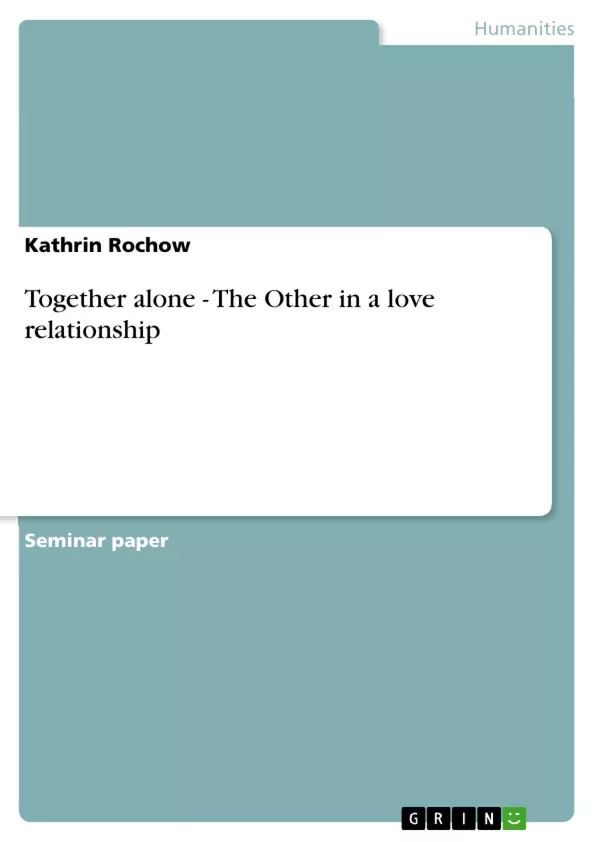Symbolic Interactionists are also referred to as “cultural romantics.”2 They sympathize with
outsiders and underdogs, believe in the contingency of self and society and envision social reality as
an ongoing interaction of people, which entails change and transformation.3 On the other hand,
Symbolic Interactionism reflects not only a subjective study of human experience, but it also
attempts to evolve an objective (social) science which holds man as a product of society and one's
self as “only existing in the definite relationships to other selves.”4 This dichotomy appears to be
fairly interesting when it comes to social phenomena that are assumingly either mainly subjective or
objective. Love tends to be seen as a merely subjective experience of the self. Falling in love with
somebody seems to be possible under the most incredible circumstances, not complying to any
rules, being mysterious and unpredictable. The “beloved other” prompts feelings and might get
positioned on a throne for the most inexplicable (personal) reasons. But who is the “beloved-other”
really? Why is he or she privileged to ascend the throne? Are the reasons for loving this particular
person barely subjective or might they be rooted in society and hence influenced and induced by an
objective reality? Do we really choose our “beloved-other” or is he/she chosen by society?
Inhaltsverzeichnis (Table of Contents)
- Introduction
- Symbolic Interactionism – the theory
- Berger & Luckmann
- Charles Horton Cooley
- George Herbert Mead
- The \"other\" in a love relationship
- Conclusion
Zielsetzung und Themenschwerpunkte (Objectives and Key Themes)
This essay aims to explore the concept of "the other" within a love relationship from a Symbolic Interactionist perspective. It seeks to answer questions about how societal influences impact the selection of a partner, challenging the notion of love as purely subjective. The essay will analyze the contributions of prominent Symbolic Interactionists, such as Berger & Luckmann, Cooley, and Mead, to understand the role of social interaction in shaping the individual's perception of "the other."
- The social construction of reality and the influence of socialization on individual identity
- The concept of the "looking-glass self" and the role of others in shaping self-perception
- The dialectical relationship between the individual and society
- The impact of societal norms and expectations on the selection of romantic partners
- The subjective experience of love within a social context
Zusammenfassung der Kapitel (Chapter Summaries)
The introduction sets the stage by contrasting the subjective nature of love with the objective realities of social influences. It introduces the essay's central question: are our choices in love truly free, or are they shaped by social forces?
The chapter on Symbolic Interactionism provides a foundational understanding of the theory's core principles. It emphasizes the centrality of social interaction in shaping individual identity and the social construction of reality.
The chapter on Berger & Luckmann delves into their theory of social reality, which posits a dialectical relationship between the individual and society. It highlights the processes of externalization, objectification, and internalization, which contribute to the social construction of reality.
The chapter on Charles Horton Cooley explores his concept of the "looking-glass self," where individuals perceive themselves through the eyes of others. It emphasizes the role of social interaction in shaping self-perception and identity.
The chapter on George Herbert Mead focuses on his theories of self-development and the importance of social interaction in creating meaning and understanding.
Schlüsselwörter (Keywords)
Key terms and concepts include: Symbolic Interactionism, social construction of reality, socialization, looking-glass self, significant others, generalized other, love, romantic relationships, social influence, subjectivity, objectivity, dialectical relationship, internalization, objectification, externalization, self-perception, social identity, and social interaction.
- Arbeit zitieren
- Kathrin Rochow (Autor:in), 2010, Together alone - The Other in a love relationship, München, GRIN Verlag, https://www.grin.com/document/205582



